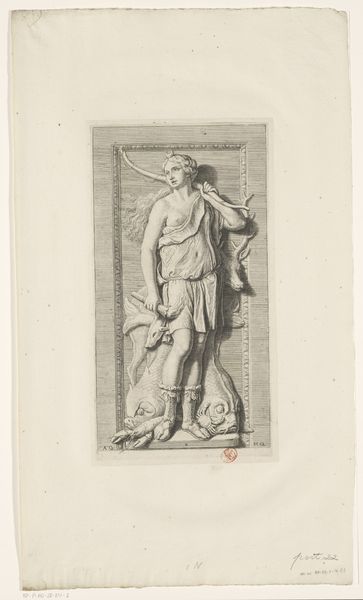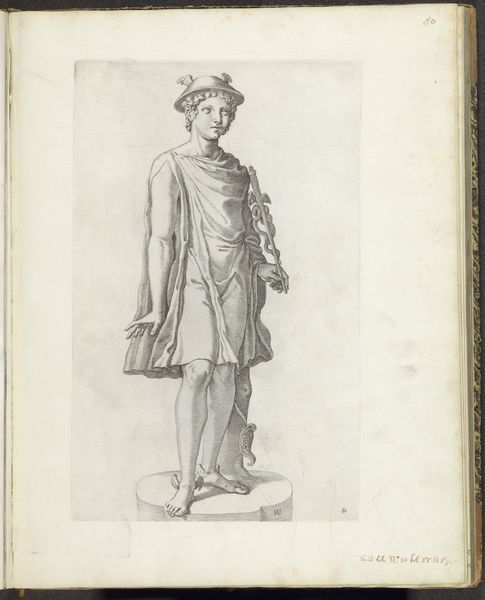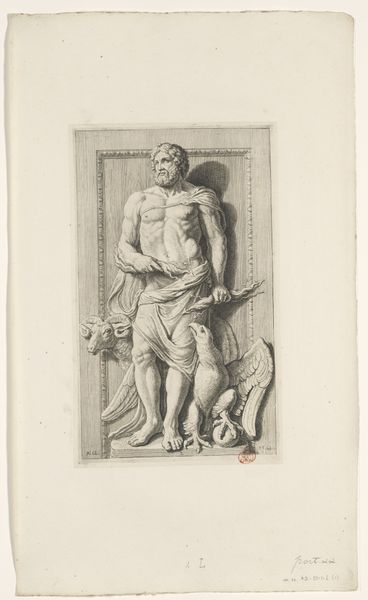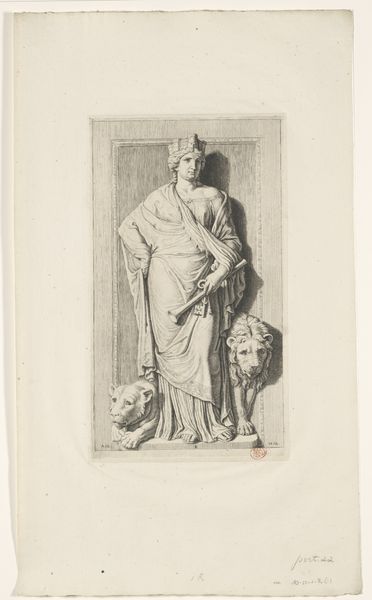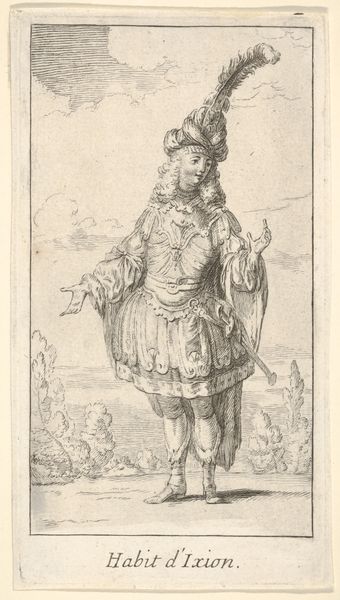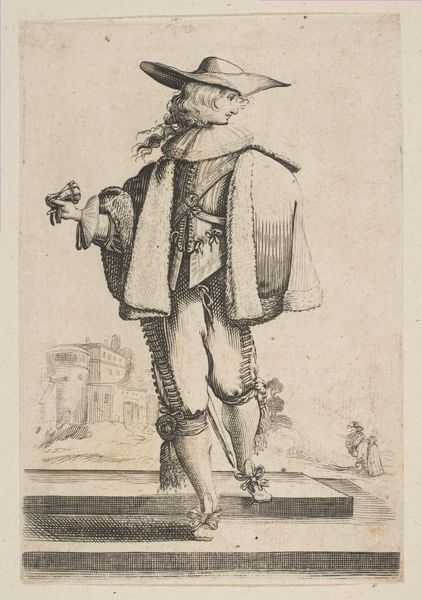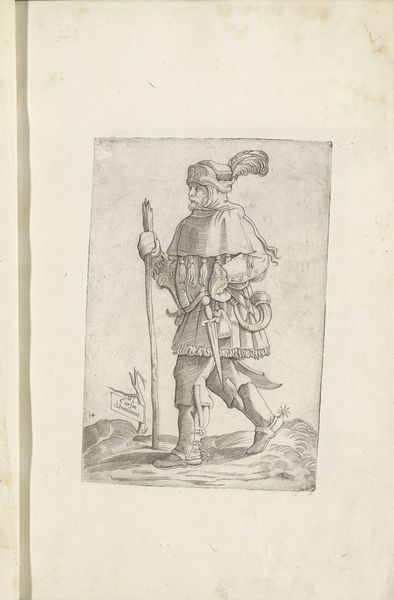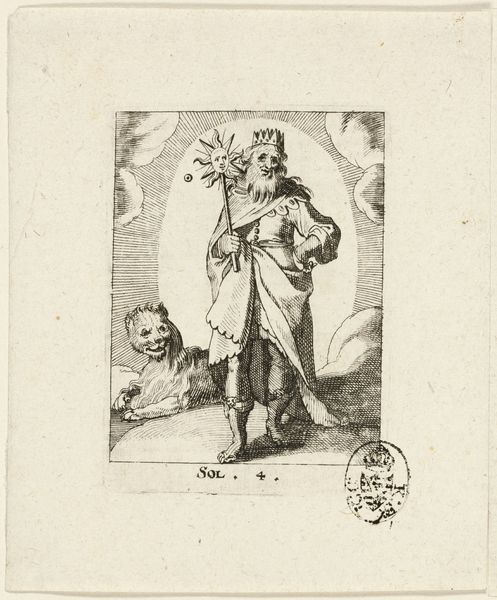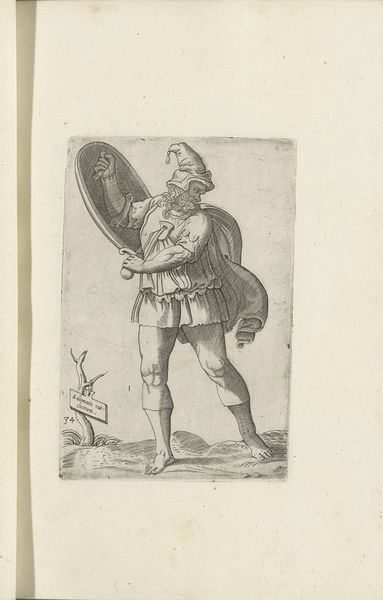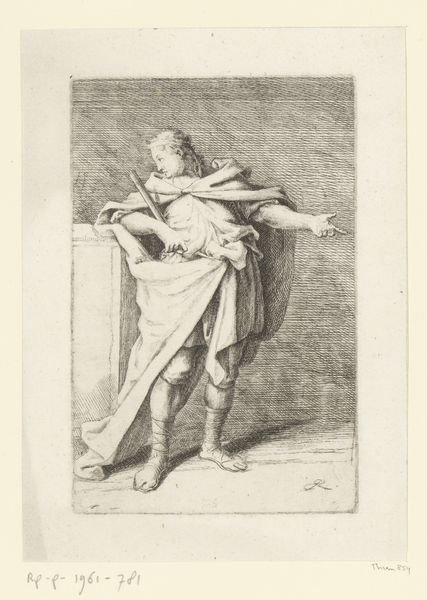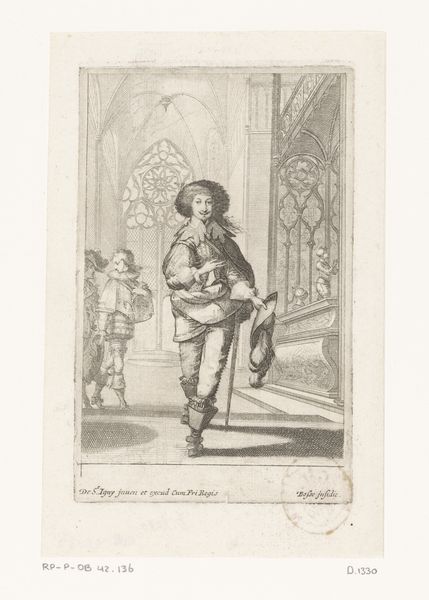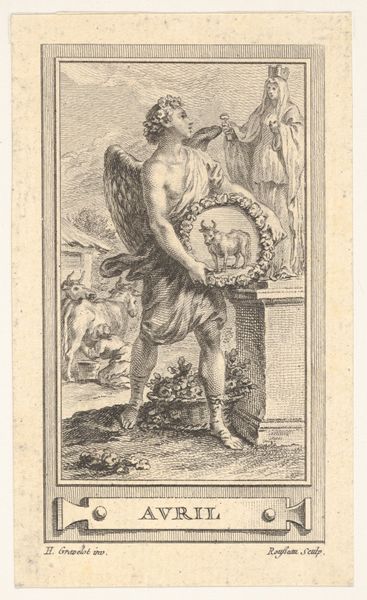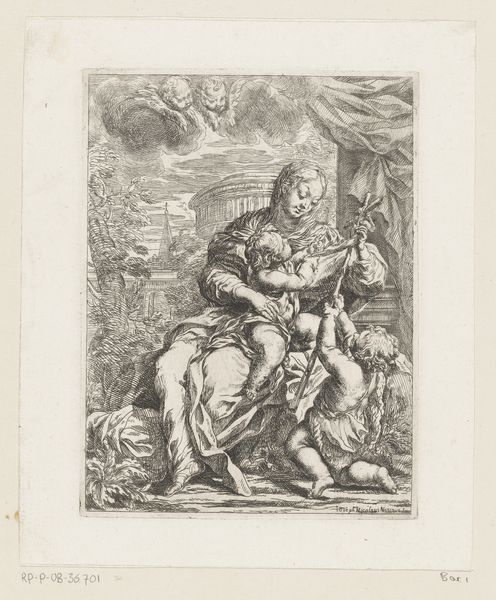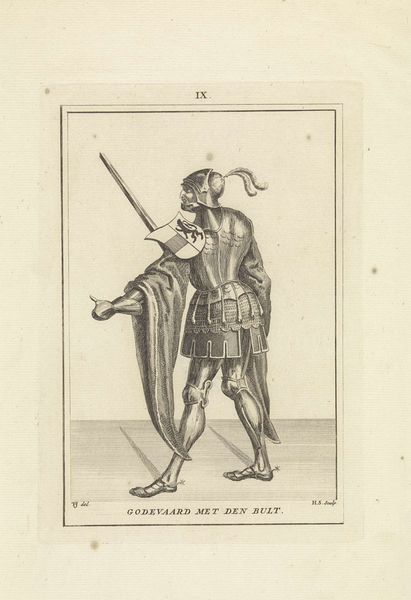
Beeld van Mars in de westelijke galerij van het Stadhuis op de Dam 1655
0:00
0:00
drawing, print, paper, engraving
#
portrait
#
drawing
#
baroque
#
ink paper printed
# print
#
pencil sketch
#
old engraving style
#
figuration
#
paper
#
pen-ink sketch
#
history-painting
#
academic-art
#
engraving
Dimensions: height 329 mm, width 191 mm
Copyright: Rijks Museum: Open Domain
Editor: This is "Beeld van Mars in de westelijke galerij van het Stadhuis op de Dam," an engraving by Hubert Quellinus from 1655, currently held in the Rijksmuseum. It has such a formal, stoic feel to it. How do you interpret this work, considering its original context? Curator: The image presents us with more than just a portrait of Mars. It invites a dialogue on power, civic identity, and the visual language of the Dutch Golden Age. This piece was originally part of a larger decorative program within Amsterdam's city hall, meant to project an image of strength and prosperity. But consider: who is this Mars really representing? And what political narratives is it subtly reinforcing? Editor: It’s interesting that you point out the implied political narratives. How does understanding that influence how we see the artwork today? Curator: We need to dissect the iconographic choices Quellinus made. Mars, typically a symbol of aggressive war, is presented here in a somewhat restrained manner. He’s armed, yes, but the overall composition speaks to controlled power, the kind of power necessary for maintaining a thriving republic. Look closely. Is it possible to draw comparisons to other sculptures that may carry religious meaning or project power? Editor: Now that I consider it more, it almost seems that Quellinus is alluding to civic duty instead of military might. Curator: Exactly. And that shift – from martial aggression to civic responsibility – speaks volumes about the values the Dutch Republic was trying to project, both to its citizens and to the world. Recognizing these embedded messages enables a more critical reading, one that goes beyond simply appreciating the artistry of the engraving. Editor: That’s a fascinating point; thanks for enriching how I interpret this work! Curator: My pleasure; thinking critically about the symbols helps us unlock how the work reflects the values and ideals of its time.
Comments
No comments
Be the first to comment and join the conversation on the ultimate creative platform.
